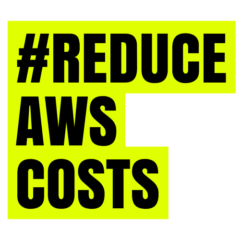Navigating the AWS: In the expansive realm of AWS (Amazon Web Services), strategic decisions surrounding availability zones and regions play a pivotal role in shaping the performance, reliability, and resilience of your cloud infrastructure. This guide aims to provide insights into the considerations and best practices for selecting availability zones and regions within AWS.
Understanding AWS Availability Zones and Regions
Availability Zones (AZs): AWS defines Availability Zones as isolated locations within a region, each with its own power, cooling, and networking infrastructure. Designing your architecture to span multiple AZs enhances fault tolerance and resiliency.
Regions: A region in AWS is a geographical area that contains multiple Availability Zones. Each region is entirely independent and consists of various data centres, enabling you to deploy resources in geographically dispersed locations.
1. Evaluate Geographic Proximity
- Assess User and Data Locations: First step in the navigating the AWS, consider the locations of your users and the geographic distribution of your data Select regions that minimize latency and enhance the overall user experience.
- Compliance and Legal Considerations: Account for legal and compliance requirements that may mandate the storage or processing of data within specific geographic boundaries.
2. Prioritize Redundancy and High Availability
- Leverage Multiple Availability Zones: Distribute your application across Multiple Availability Zones within a region to ensure redundancy and high availability.
- Implement Multi-Region Architectures: For critical applications, consider deploying in multiple regions to enhance resilience in the face of regional outages.
3. Consider Data Sovereignty and Compliance
- Understand Regulatory Requirements: Be aware of data sovereignty regulations and industry-specific compliance standards. Choose regions that align with these requirements to avoid legal complications.
4. Optimize for Cost and Performance
- Evaluate Regional Pricing: AWS pricing can vary between regions. Assess pricing structures and choose a region that balances cost-effectiveness with performance requirements.
- Utilize Global Accelerators: AWS Global Accelerator is a service that enables you to optimize the performance and availability of applications by using static IP addresses.
5. Factor in Service Availability
- Check Service Availability by Region: Not all AWS services are available in every region or Availability Zone. Check the AWS Regional Services List to ensure the required services are available in your chosen regions.
6. Prepare for Disaster Recovery
- Establish Cross-Region Disaster Recovery: For mission-critical applications, design a comprehensive disaster recovery plan that involves replication and backup across multiple regions.
7. Stay Informed About New Regions
- Monitor AWS Announcements: AWS continues to expand its global infrastructure. Stay informed about new region launches and evaluate their suitability for your workloads.
8. Leverage AWS Tools for Optimization
- Use AWS Global Infrastructure Dashboard: Gain insights into the status of AWS regions and services through the Global Infrastructure Dashboard.
- Employ AWS Organizations: Utilize AWS Organizations to centrally manage and govern your environment across multiple accounts and regions.
Conclusion: Crafting a Resilient Cloud Strategy
Navigating the AWS, better to say the selection of availability zones and regions in AWS is a strategic endeavour that requires a holistic understanding of your application requirements, user base, and regulatory landscape. By carefully considering factors such as redundancy, compliance, cost, and performance, you can craft a resilient cloud strategy that not only meets your current needs but also positions your infrastructure for future growth and adaptability. Keep abreast of AWS developments and continuously reassess your choices to ensure your cloud architecture remains agile, reliable, and optimized for success.


![Navigating AWS Cost Explorer API [check list]](https://www.reduceawscosts.com/wp-content/uploads/2024/01/Navigating-AWS-Cost-Explorer-API-check-list-www.reduceawscosts.com_.jpg)

